Architectural concept
The University of Luxembourg is contributing to the ESCH2022 event with Petite Maison, a collaborative architectural project based on the theme of circularity. Designed and executed under the direction of architect and visiting professor Carole Schmit, in collaboration with Dragos Ghioca – architect and research fellow for the Masters in Architecture (FHESS) – and Professor Chrisoph Odenbreit (FSTM), with the support of frEsch.asbl and the LIST, Petite Maison has been co-created thanks to the contribution in kind of professional partners from Luxembourg and Greater Luxembourg.
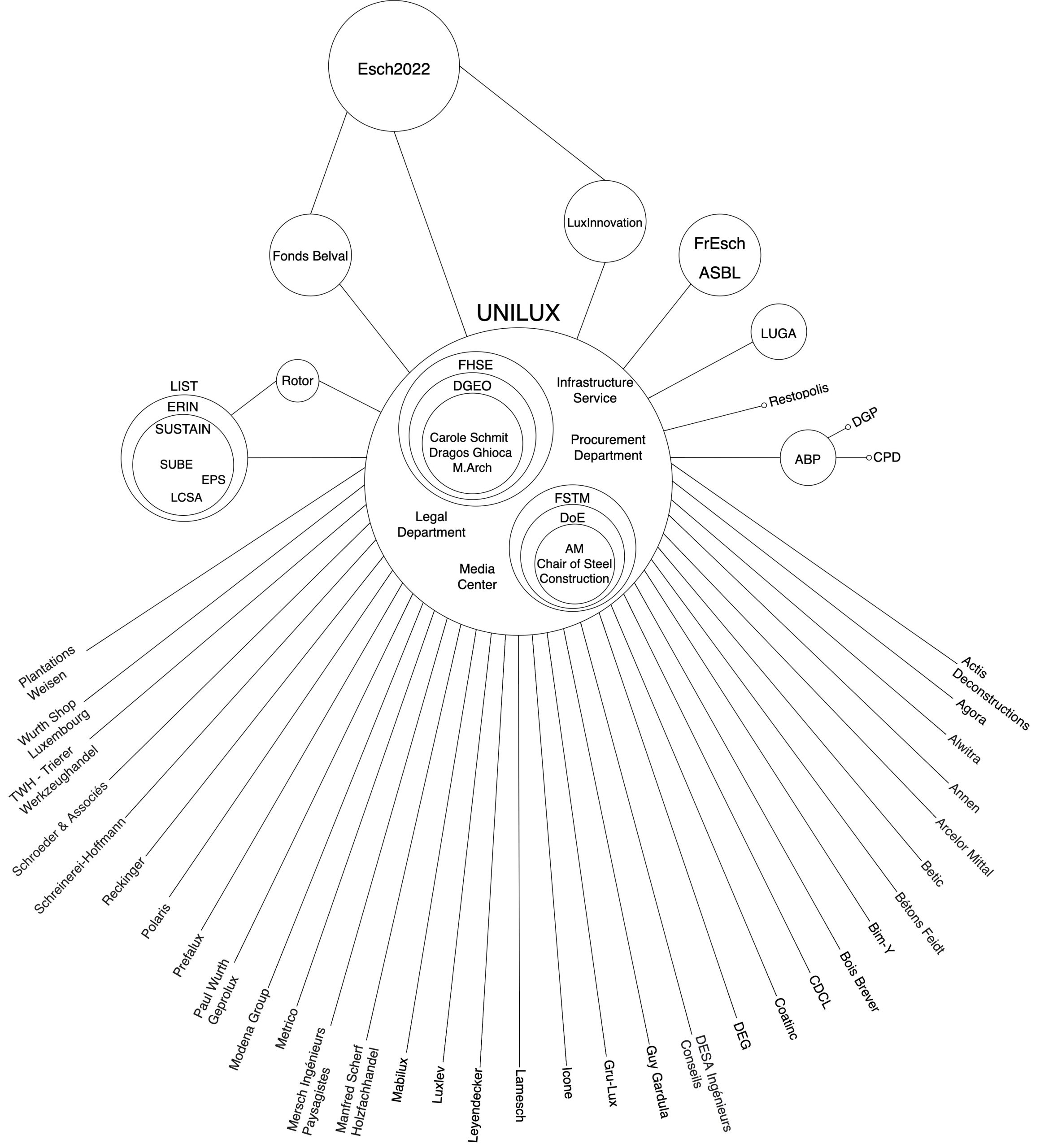
The challenge of material resources
The subject of resources is of crucial importance, as it is a source of worldwide conflict and environmental distress on a global scale. In this sense, Petite Maison is a follow-up to the All We Need exhibition that was part of the European capital of culture in 2007. At the time, the report from the GIEC (group of intergovernmental experts on climate change) had finally started to reach the international media and the wider public. So we realised that our resources were limited and had to be protected against growing threats, particularly with regards to the climate. We had to communicate and share in order to convince. Today, the general public and politicians understand that we must act. Everyone realizes that the future won’t unfold in the same way it did for the post-war generations. Many people are aware of the extreme urgency and know the time has come for radical change. Yet people are not really resolved to changing their current way of life, since neither institutions nor the business world are determined enough to put in place the necessary change while creating the desire for that change. So the question remains: who is able to change?
Petite Maison tries to partially answer this question in a subjective manner. Belval is a place for training and research, with a population that is both local and international. This natural blend of nationalities and academic traditions is the distinctive feature of the University of Luxembourg’s DNA. Its community represents a fine sample of the global educated population and serves as an ambassador. Change is enacted via cooperation and thanks to huge investment, above all by those in power who have the means and expertise.
A community of designers
The Belval site also bears witness to the uniquely European practice of creating cities based on stratification. But the European city is a story of construction, demolition, reconstruction and transformation amid a contextual and historical background. The Petite Maison project helps tell this story. It creates a link between the territories and the eras they span. It is a fact that change will have to come about on a global scale, not just in small doses. For months, and indeed years now, Petite Maison has been bringing together a community keen to work together around design, construction and deconstruction. This team is made up of researchers, students, university professors, research centres, and public and private organisations, as well as design offices, companies and suppliers. Everyone contributes to the best of their abilities, offering as much funding as they want to share and make available. The community wants to reach out to as many people as possible, and will be sharing its experience with attendees of Esch 2022. Everyone shares a common vision on the cultural, economic and technological transformation that needs to be enacted in the future to significantly improve the fate of our planet’s resources.
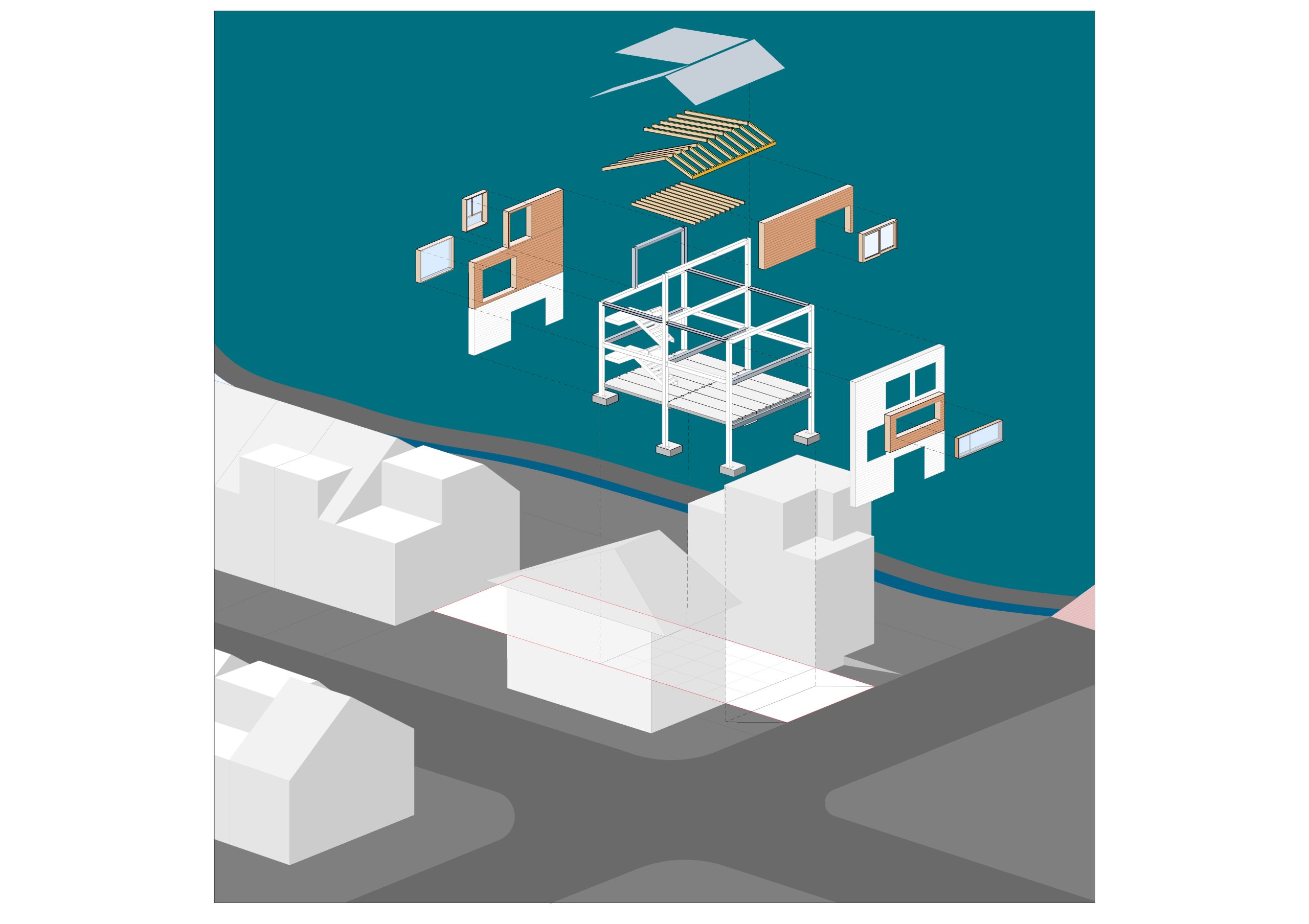
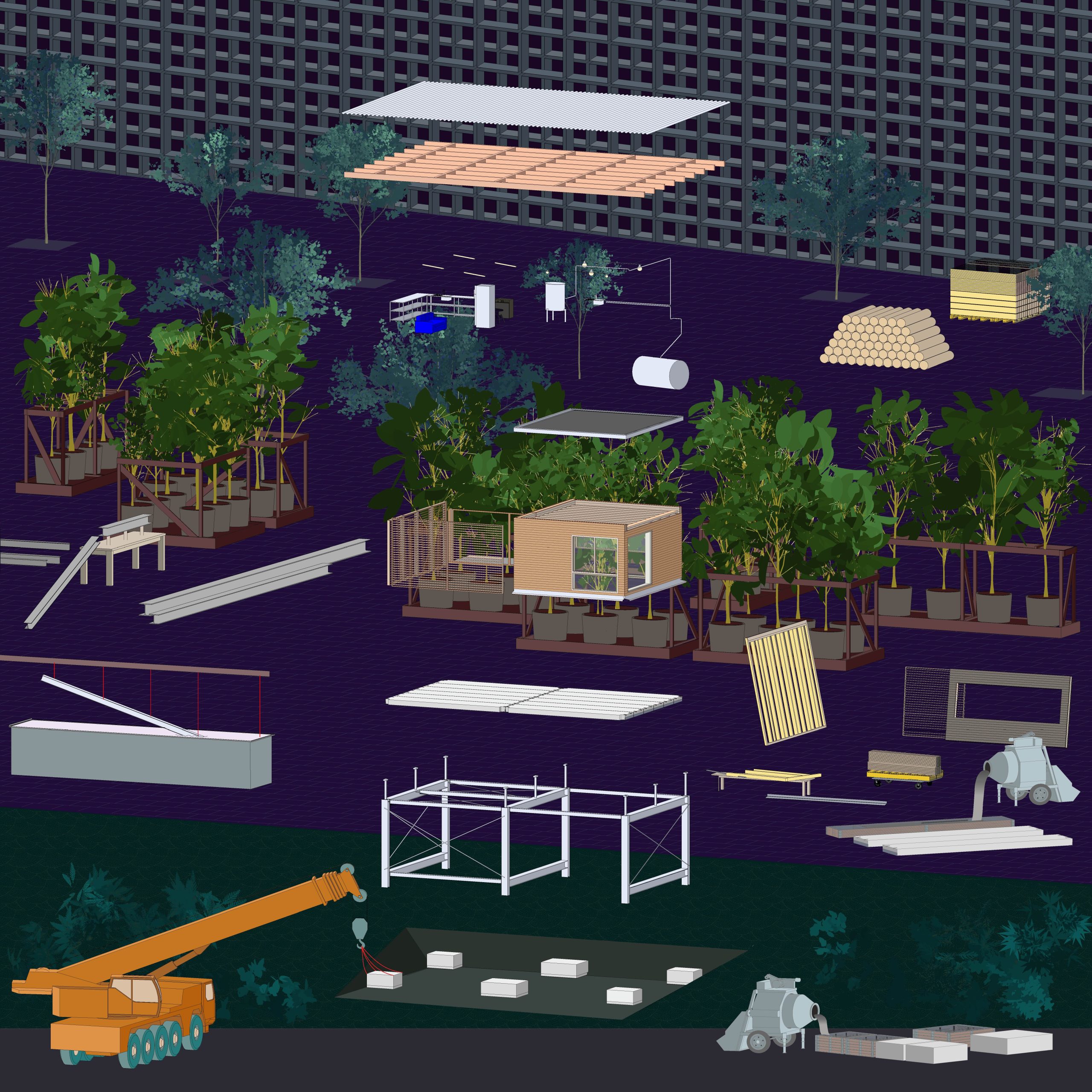
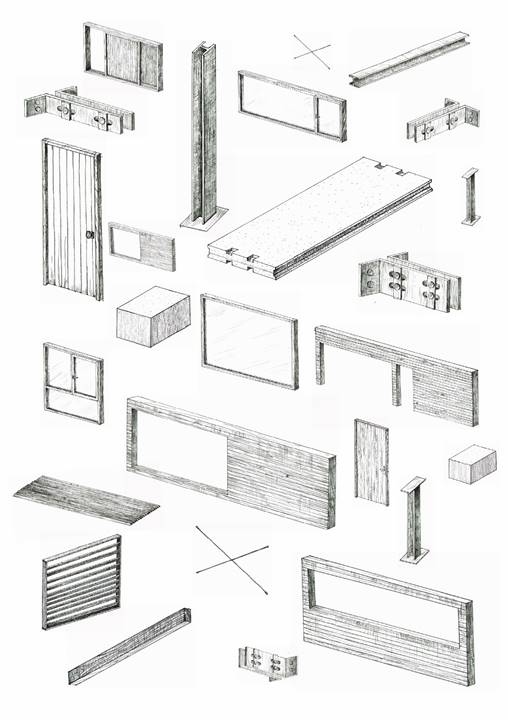
A pioneering concept
Petite Maison is a pioneer in the country it sits in. There is currently no market for second-hand products and materials in the Luxembourg region. This is a clear sign that the country is not overly concerned about solving the question of access to resources. Yet southern Luxembourg has all the characteristics of the fertile ground ideal for this type of corporate culture, given that a majority of its immigrant population works in the construction sector.
Petite Maison shows what the future of architecture may look like, and the mindset designers will need to adopt to make the principles of circular construction both affordable and attractive to its users. The look of the nuts and bolts, the appeal of the finishes to the raw materials and the care taken with the fixings all form part of the language to adopt to finally demonstrate how buildings work and deliver what we expect of them. A new aesthetic landscape will open up to the world of architecture and engineering.
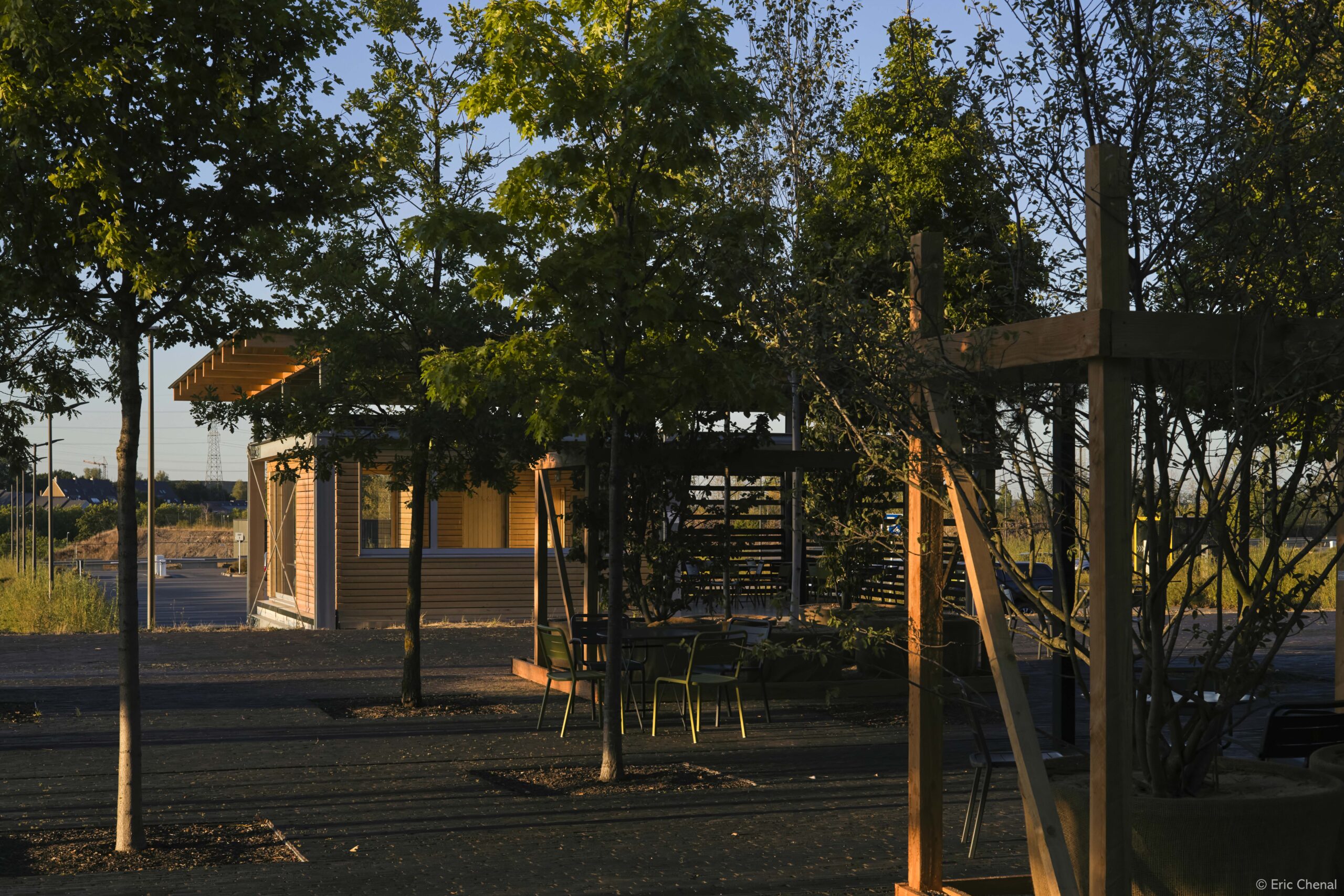
The collective approach to the project will help set an example by highlighting the need to create spaces for discussion, research and training that can convey knowledge to companies, institutions and the general public. The temporary nature of Petite Maison presents us with a more subtle framing, allowing us to unite stakeholders at all levels who are involved in the world of design and construction, in order to try to pinpoint the appropriate processes needed to develop our living spaces and make them ever more resilient. By shining a light on new techniques and technologies (digitalisation, material research and construction methods), the project reflects changes in mindset, with an ever-present human, artistic and contextual basis.

In conclusion
Petite Maison promotes a style of architecture with a flexible character, where circularity is a design method that holds its own, based on regional production where possible. That way, as many people as possible (individuals, creators, companies, investors, etc.) can help solve the issue of access to resources, with less uncertainty when faced with a saturated global market. The question of ownership is also an important (political) topic in this project. Because many believe that purchasing is about product-service, which will ultimately be replaced with rental or leasing, often to the benefit of multinationals and major economic players. Petite Maison is also aimed at families and individuals who want to have their share and not depend on resources that are concentrated in the hands of a minority. And the human population aside, we still need to find a balanced way to allocate and share resources between all living species. Petite Maison wants to make circularity a societal issue, helping everyone to think about their own needs and aspirations, issues of scale and interdependence, services, careful treatment of materials, and the people that surround us.


Links:
http://www.masterarchitecture.lu/Petite-Maison_221_0.html